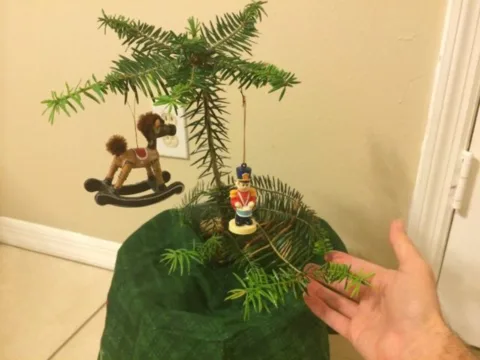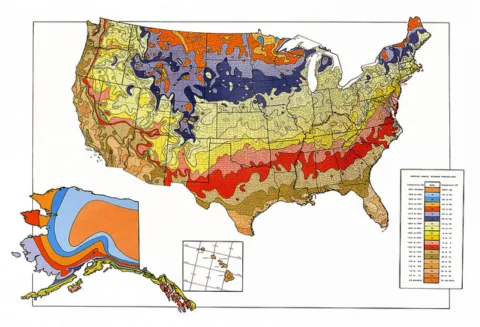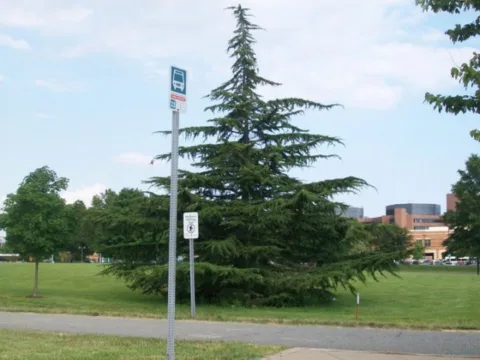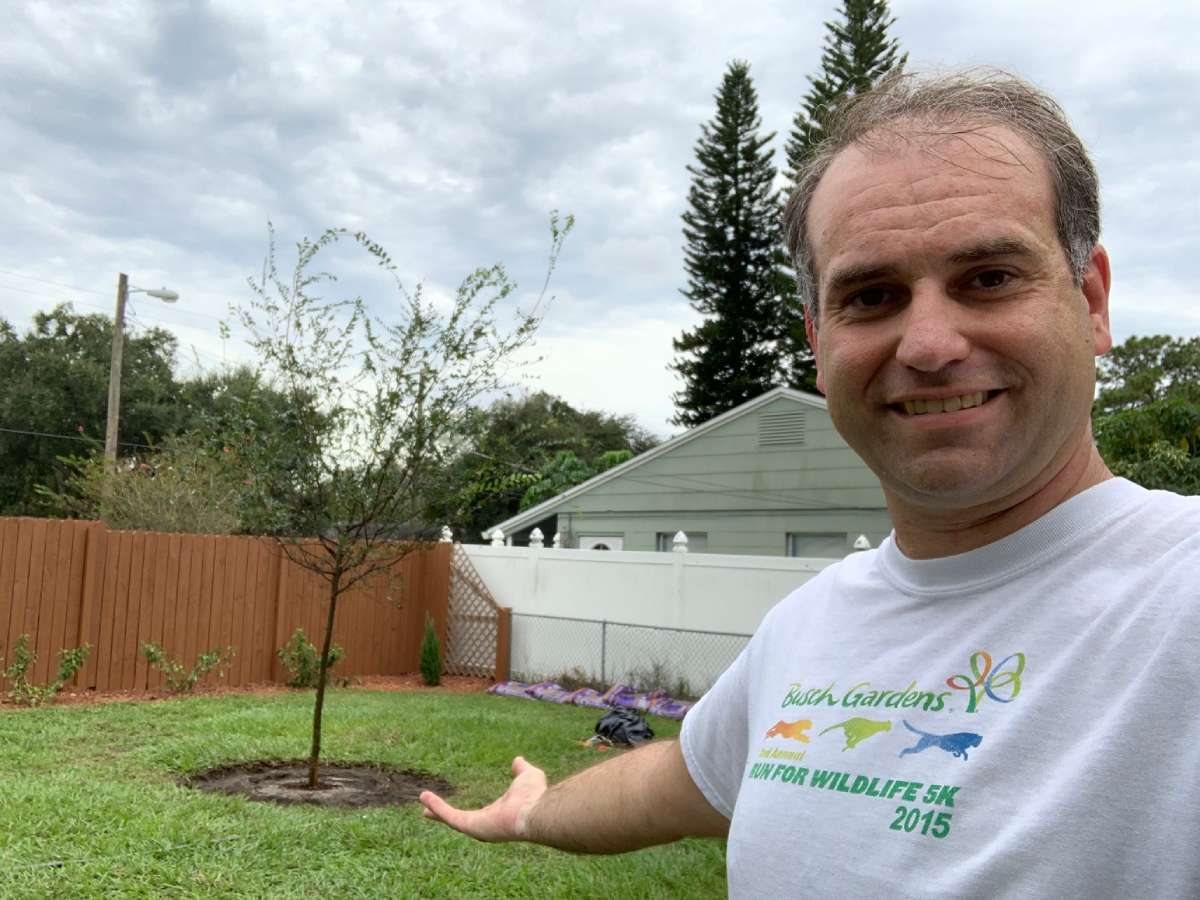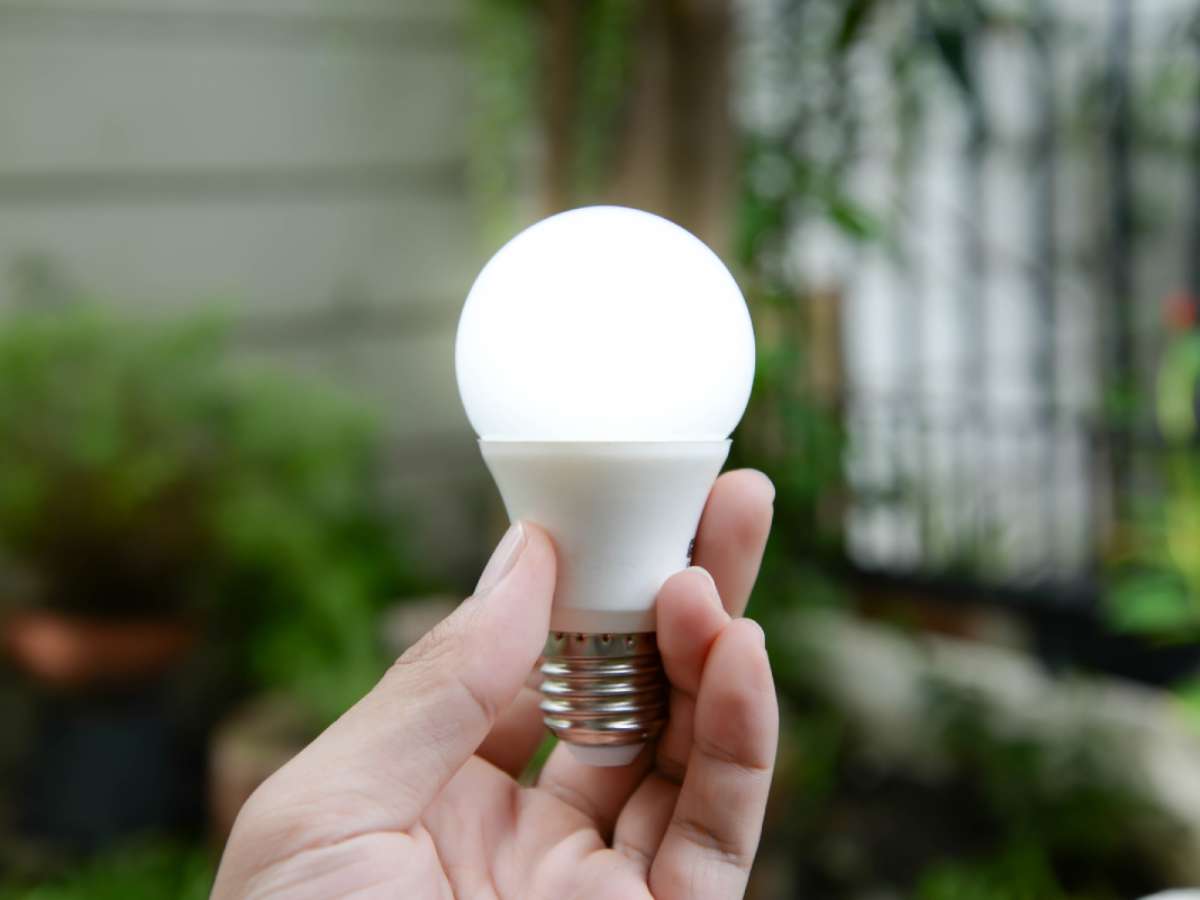Have you been wanting to try your hand at growing a living Christmas tree?
It’s more environmentally friendly than using a fresh-cut or artificial Christmas tree — and it’s fun!
What’s more, if I can grow a live Christmas tree, you can do it, too.
You see, I live in Central Florida, where only a single species of fir and a small array of the common Christmas tree pines can grow.
My Dixie fir (also called a Japanese fir, Momi fir, or for you botanists Abies firma), pictured above, is seen in its second year of growth.
I potted it as a bare-root transplant that I bought from a mail-order Christmas tree farm. It grows outdoors throughout the year without any problems whatsoever.
Where I live, we do get occasional frosts and ice, but don’t worry — most Christmas tree species are cold-weather hardy!
And while my traditional Christmas tree options may be pretty limited here in Central Florida, most of my friends and family in the northern states can grow a variety of firs and spruces that they can then decorate each year around the Christmas holidays.
Advantages To Growing A Living Christmas Tree
There are many reasons to have a living Christmas tree instead of buying a cut Christmas tree or an artificial Christmas tree:
- Living Christmas trees can grow for many seasons and become a part of the family.
- With a live Christmas tree, you don’t need to buy a tree that’s been chopped down — so, you’re not “wasting a perfectly good tree.”
- Live Christmas trees help supply oxygen and will have longer-lasting benefits for the environment than trees that are grown simply to be harvested for one-time use during Christmas.
- Living Christmas trees are the freshest looking and nicest smelling since they’re actually alive.
- Live Christmas trees are better for the environment than artificial Christmas trees, which deplete resources during their manufacture and may contain harmful toxins.
A lot of people think that living Christmas trees are messy and generally fussy.
Really though, live trees don’t usually drop as many needles as cut Christmas trees do. Plus, with a simple tree skirt you can cover the soil in the tree’s pot — giving it a nice, decorative base.
Are There Any Downsides To Growing Live Christmas Trees?
I like to give balanced opinions, and I can’t say there are no disadvantages to growing a live Christmas tree:
- For one, you’ve got to water the tree on a regular basis, see that it’s getting enough sunshine, and make sure it’s growing healthfully. Gardening isn’t for everyone, so you’ll need to decide if caring for a live Christmas tree is for you.
- You also need to think about how much space you have available to grow your Christmas tree. A tiny sapling (like my tree started out as) is easy to grow in a small pot outdoors on a balcony, porch, or patio — perfect for apartment dwellers! But that little tree won’t stay little forever.
- Once your tree gets too big, what happens to it then? Well, if you live in tight quarters (and expect to for a long time), a live Christmas tree may not be the best idea for you right now.
- Finally, you need to think about commitment. I mean, you can’t just throw out your living, growing, beautiful evergreen because you don’t feel like messing with it anymore. I don’t have the heart to do that anyway. If there does come a time when you’ve had enough of the tree, just plant it in your yard or give it to somebody who will take care of the tree. But please, don’t just dump it. After all, we need more trees in this world!
Where Can You Grow A Living Christmas Tree?
So, you think you want to grow a live Christmas tree after all?
Depending on where you live, it shouldn’t be terribly difficult for you to grow a Christmas tree.
The first thing you need to know is what your USDA growth hardiness zone is.
Here’s a basic map that you can use for visual reference:
Now, do you see those blue, purple, deep orange, reddish, greenish-yellow, and yellow areas?
If you live anywhere in those regions, you should have no problem finding a fir or spruce species that you can grow as a living Christmas tree.
Those are areas where fir and spruce trees grow very well and without a terrible amount of fuss. They grow in the wild in those parts of the country and are fairly common landscape trees.
The areas toward the south — in tan, beige, brown — are areas where fir and spruce trees don’t really grow well.
In fact, there is just one fir tree that grows in those regions, and I’ll talk about that in just a bit.
The southern half of Florida is unfortunately too warm, on average, to allow any kind of fir tree to grow naturally outside. There are fir Christmas tree alternatives, though, and I’ll cover that in just a moment, too.
A List Of Living Christmas Tree Species
What kind of live Christmas tree do you want to grow?
Here’s a list of firs, spruces, and pines that people most commonly use as Christmas trees:
- Balsam fir
- Canaan fir
- Douglas fir
- Fraser fir
- Grand fir
- Noble fir
- Concolor fir (white fir)
- White pine
- Scotch pine
- Virginia pine
Alternative Living Christmas Tree Species
The list above covers the most common types of trees that people grow to decorate during Christmas and the other holidays near the end of the year.
But if you live in an area where those types of trees don’t grow, you’re not out of luck!
Here’s a list of other tree species that are conical in shape and are perfect for growing as living Christmas trees:
- Dixie fir (also known as Japanese fir or Momi fir) — This is the single type of fir that can grow well in the Southeast United States south of Atlanta.
- Leyland cypress
- Arizona cypress
- Eastern red cedar
How To Grow A Living Christmas Tree
This is where you’ll need to do a little research. Every type of tree has its own growing requirements, so there isn’t one way to grow every type of tree.
You can click on each of the links above to find out more about how to grow each specific variety of tree, though!
Here are 5 basic tips that apply to growing most of the trees listed above:
- Be careful trimming your tree — While you may want to keep it looking a certain shape, if you cut back too much you may permanently stunt the tree’s growth. Avoid cutting the main leader (the upright trunk), and don’t cut the branches too far back. Generally avoid cutting more than 20% to 30% of the tree. It is encouraged to do some light pruning for denser growth, but only cut parts of the branch covered by leaves — preferably newly grown stems.
- Take special care of the tree’s root system — If you’re growing a living Christmas tree, chances are you’re growing it in a pot so you can move it around and possibly even take it indoors during the holidays. So be sure the pot is big enough for the tree, because a potbound plant is an unhealthy plant and may die or become susceptible to disease.
- Don’t over-fertilize your tree — Sure, you want your Christmas tree to be nice and tall as soon as possible, so surely a little fertilizer will help it out, right? In the case of growing most of the trees mentioned above, fertilizing it can be one of the quickest ways to kill your tree. Don’t place fertilizer directly in the potting hole, and if you do use any, spread just a bit on top of the soil once per growing season. A 12-12-12 fertilizer mix is about right.
- Mind the growing season — Based on the type of tree you’re growing and where you’re located, the growth season will be slightly different. But for most folks living in the northern climates or in the mountains, trees stop growing each year around August. In that case, don’t prune your tree until the fall. Pine trees can be pruned after mid July.
- When the tree is too big to display indoors, give it a permanent home outside — If you’re growing a living Christmas tree to display indoors, there will come a point when it might become too big to move around and set up in your home. At that point, it’s time to carefully remove it from its pot and transfer it to your yard. There, it will continue growing, providing oxygen, and beautifying your landscape for years to come. And, sure, you might still want to throw a couple yard decorations on it each year to celebrate the season!

